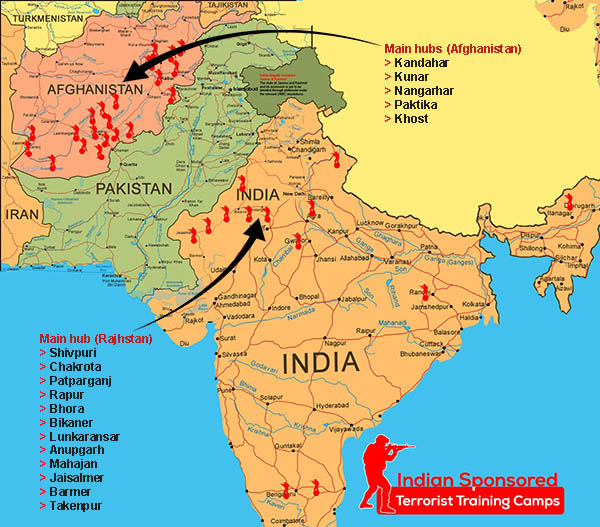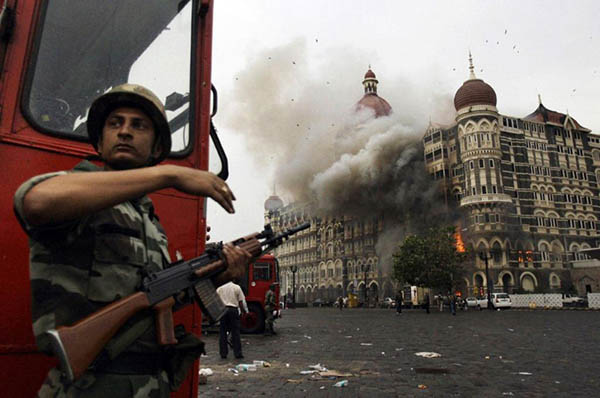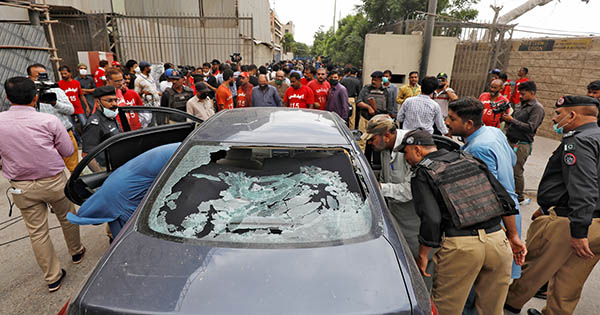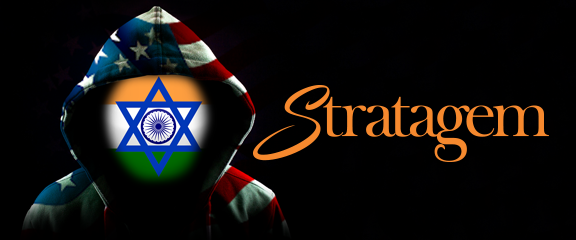The 20th Century will be remembered for many things: two great, and many not so great wars, rapid industrialisation, the appearance and use of weapons of mass destruction, the end of colonialism giving way to huge geographical changes by way of the birth of many independent nations across the globe, including Pakistan and India, the rise and fall of Communism, and last but not least, the rise of democracy as the most preferred social contract to manage the affairs of state.
Just in the beginning of its third decade, the 21st century has already rendered global events which are changing the shape of the world as we know it. And COVID-19 isn’t the only earth-shaking event. Although it is forcing lifestyle changes which were unthinkable a few years ago, it still has to play itself out to finality. The world is also undergoing another upheaval of a different kind. Perhaps this is the culmination of a phase in the endless power games politicos play — big boys setting themselves and their allies up for a dominant position, economically as well as militarily. And as the sages had prophesied in the 18th century, the balance is shifting east, slowly but surely. Asia and the Indian Ocean are emerging as the main battleground.
The cascading geo-strategic effects of two, apparently small events of the latter half of the last century are becoming visible, as the countries in the region come to grips with changing ground realities. We in Pakistan don’t seem to appreciate their magnitude, but both the events were put into motion by the controversial military rule in the latter half of the sixties. The first of these was the development of the Karakoram Highway, establishing the land route between China and Pakistan and mainstreaming China, putting it on the world stage by facilitating a China-US link. The second, our brilliance in ousting the Soviets from Afghanistan. These are huge achievements of which we aren’t sufficiently proud. Understandably, allowing India to break up Pakistan in 1971 is something we will forever be ashamed of. However, there is a silver lining to this black mark as well — that in trying to break up Pakistan, India set itself up to becoming ‘Hindia’ — and then perhaps ‘End-IA?’

The logic? On December 16, ‘71, while Pakistan was reeling due to its worst ever politico- military failure, orchestrated by Indira Gandhi, India was congratulating itself for having given what it saw as deserved comeuppance to Pakistan. It was at this time the RSS began to emerge from the dark, showcased as the BJP. Brahmin Zionists started to believe that India was capable of great things, including actualising their dream of Akhand Bharat. However, there was the small matter of a truncated, but still existing Pakistan, which had to be streamrolled into subservience, if not further broken up into smaller, more manageable entities.
The Vajpayee-led BJP government of the ‘90s was a transitory phase, and the rapid erosion of the thin veneer of secularism that was still in place, continued. This was evidenced by the destruction of the Babri Mosque at the end of the Rath Yatra led by Lal Krishna Advani, the BJP ideologue and one of the political masterminds of extremist Hinduism, Hindutva or Brahmin Zionism to be precise. The Modi-led BJP of 2014 was the manifestation of the real thing. Returning to power in 2019 with an overwhelming majority, he now had a licence to kill. And did he go for it! The outcome: success beyond imagination. This dovetailed nicely with America’s geo-strategic ambitions. It had foreseen the rise of China as its competitor on the world stage and was working to confine it to controllable limits. The jury is still out vis-a-vis determining the hows and whys of 9/11, but the fact is that it provided sufficient grounds for the Americans to put their boots on the ground in Afghanistan. Soon thereafter, India jumped on the bandwagon, re-entering the country with all the wherewithal required to unleash a different kind of war on Pakistan through its terrorist proxies. There was no check on its ambitions for obvious reasons. As a result, we found 5th generation warfare morphing into its current shape on our own soil. To begin with, Pakistan began to be really demonised as a hotbed and sponsor of terrorism all over the world in general, and in India in particular, its success in the erstwhile East Pakistan having provided the template for this purpose. It was adopted with the necessary modifications, allowing the policy planners to go to work in all earnest to achieve this objective, as part of its grand design to finally undo Pakistan.
The blueprint for this entailed employing all elements of state power to achieve a synergy of efforts. This offensive was to be led by India’s massive propaganda machine, which would get its fodder from the state machinery. Special media and intelligence cells were created for this purpose. The recently unearthed ‘Indian Chronicles’ list out the expanse of activities of only one such cell, which began its handiwork in 2005. Lest we forget, the same formula, though in a somewhat cruder form, had been applied successfully in erstwhile East Pakistan as well. Pakistan and the Pakistan army were accused, charged and declared as the perpetrators of virtually every conceivable crime. Ironically, some of our own people were in the lead in the blame game against Pakistan. And whatever existed of the international media back then, was fully on-board. Clearly it wasn’t going to be much different this time around.

False flag operations were to be the key component of this game plan. It got off to a brilliant start with what India calls its 9/11, on 26/11/2008, when 10 men reportedly laid siege to their largest city, Mumbai, for over 60 hours. The world lapped up the outgoing information about the situation provided by the Indian media. Even before it was clear as to what these “terrorists” were up to, Pakistan was named and universally accepted as the culprit. Our own media and certain incompetent politicians messed it up further by virtually writing an FIR against their own country. And even though sections of the more serious Indian media, senior Indian police officials as well as neutral writers have proved beyond doubt that Pakistan could not have perpetrated this attack, the mere logistics of it being beyond the ken of an outsider, those Pakistanis who had so readily accepted and repeated the nationalistic Indian narrative at the time, have not yet publicly reneged on their original stance. The fact is, that no intelligence agency worth its salt would ever send its operatives with their country’s name printed in capital on everything carried by them. Damaging as the situation was given all the fake news, there was, however, one positive outcome: our media and politicians learned about false flags for the first time.
We also got a glimpse of what modern propaganda looks like and what it is capable of, since Pakistan continues to pay for it even now. That apparent success emboldened India further. Subsequently, Pakistan was to bear the brunt of many more incidents of India’s covert war against us, culminating in Pulwama in 2018. The Modi-led BJP went into overdrive, whipping up strong anti-Pakistan sentiments as a pivot of their election drive. And the world was on Modi’s side. Then February 2019 happened. This time Pakistan responded, telling the world in no uncertain terms that enough was enough. That notwithstanding, Modi went on to win another landslide victory, and took that as a license to go all the way. His anti-Pakistan agenda continues, but alongside, the situation continues to evolve.

For a change, for example, Pakistan has gone public about continuing Indian involvement in terrorism in Pakistan, and backed this with hard evidence. Some Indian publications have taken the matter up, going even further by detailing the Indian media’s shenanigans against Pakistan. The world was slowly coming to terms with these disclosures, when the Modi mouthpiece, Republic TV host Arbab Goswami’s WhatsApp chat, dubbed ‘Godi Media,’ became public, exposing Modi’s India for what it really is: a fascist country which doesn’t hesitate in sacrificing its own soldiers for petty gains (Pulwama False Flag), and which can put world peace at risk (the ill-conceived Balakot air strike), just to win a few more seats in the elections. Increasingly, courtesy his supporters’ rabid pronouncements, Modi and his cronies’ antics have also become a favourite for anti-BJP comics’ stand-up shows.
The questions are, do the Modi-led Brahmin Zionists understand the possible fallout of such adventurism? Is Pakistan’s narrative finding global traction? Are we doing enough to convince the world that India is on a self-destruct course, and in the process, could take the world down with it?
The last 20 years have exploded almost every myth about India, which the country had nurtured with lots of care and finesse. December ‘71 had bolstered the perception that India is a big country, and on the way to greatness, typical of street bullies. Gradually, countries in the immediate vicinity of this bully have seen through it and are now readjusting their positions accordingly. As a result, more people have come to recognise that:
1. India is an unnatural state, where except for some areas in its north, almost everyone is up in arms against the very idea of being part of the Indian federation.
2. It is not the world’s largest democracy, but an outright fascist state where no minority is safe.
3. Indian secularism was the biggest fraud perpetrated on the world, with the country’s hapless minorities its victims.
4. The Indian media is rarely free, if ever. It works hand-in-glove with its government to further their cause.
5. And last but not least, Brahmin Zionism, marketed as Hindutva, has no respect for peace, human rights or the lives of its own people. It will go to any extent to achieve its objectives.
It is worrying that the world at large hasn’t woken up to the dangerous possibilities if India doesn’t correct its course. There is also this remote possibility that it is being allowed to grow as a sacrificial lamb for something bigger than misplaced Indian ambitions. Either way, it doesn’t solve Pakistan’s problems, in the near future or on a long-term basis. And sadly Pakistan isn’t doing enough. Presenting well-prepared dossiers to the world isn’t finding many takers. It is fortunate in a way that the ‘Indian Chronicles,’ the Godi Media and the reality behind most of India’s false flag operations weren’t exposed by us. But we have to keep pushing till the world decides to deal with this bully appropriately. One has to acknowledge ‘Hindian’ persistence in following what they feel is a sure path to glory. That it could lead to an abyss, hasn’t, however, yet crossed their minds, never mind the sane voices from within warning them of this possibility. Not very reassuring for countries in the region, or the world at large.

Lt. Gen (R) Ghullam Mustafa
The writer is a prominent defence analyst. During his long and distinguished military career, he held a number of command positions.



